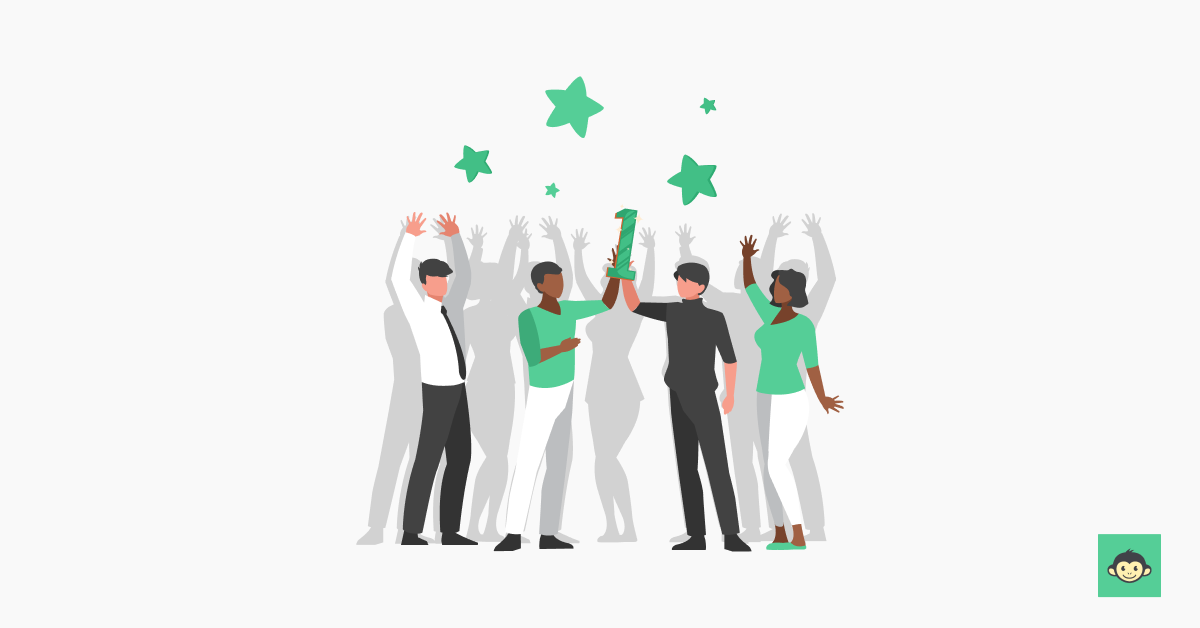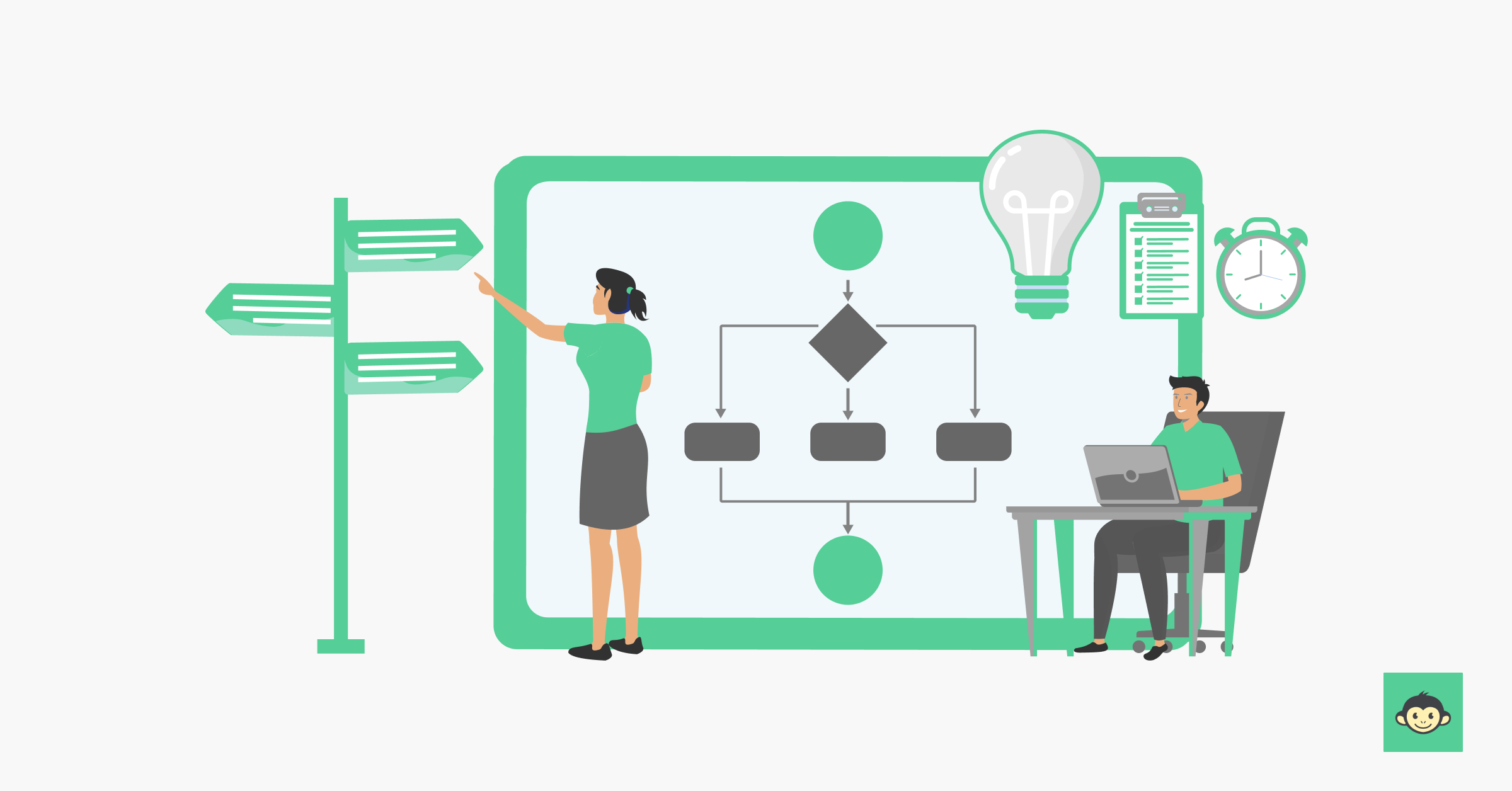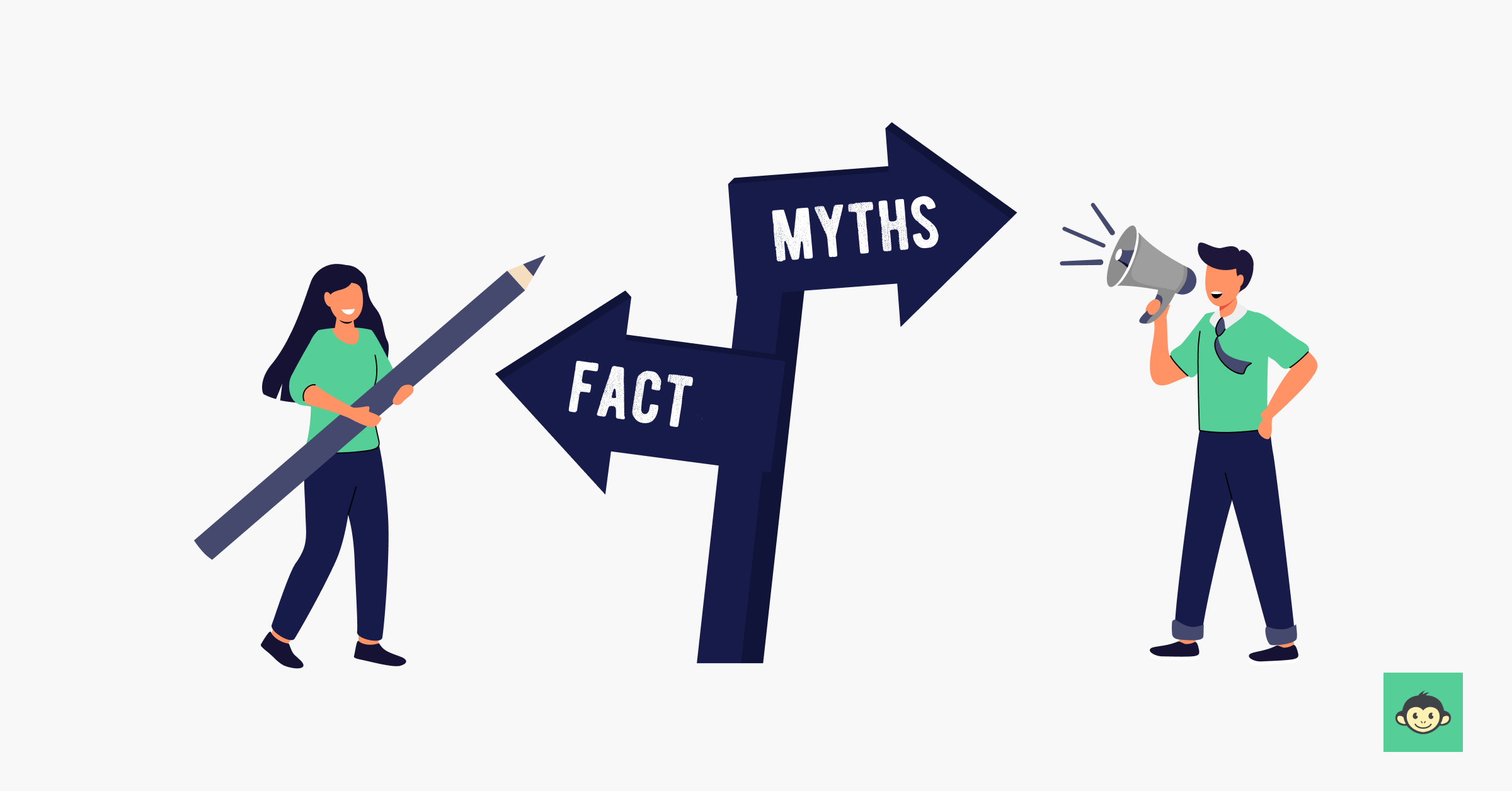55+ Meaningful employee recognition programs to enhance workplace

Are you tired of your employees looking at you like a grumpy boss instead of the beloved leader you know you are? Well, we have just the thing to turn that frown upside down - employee recognition programs!
You see, giving your employees a pat on the back for a job well done doesn't just boost their morale, it also boosts your bottom line. And who doesn't love that?
With a little creativity and a lot of enthusiasm, you can create a recognition program that will have your employees feeling appreciated without breaking the bank.
As the great philosopher Homer Simpson once said, "Don't blame me; I'm just a product of my upbringing - I was raised by a TV." Well, let us tell you, your employees are a product of your leadership.
So, let's give them something to smile about and implement a great employee recognition program today!
Table of contents:-
- What is an employee recognition program?
- What is an example of employee recognition program?
- What are the 4 types of recognition?
- Types of employee recognition programs
- 55+ Best employee recognition program ideas
- Types of reward systems can foster inclusion in the workplace
- Benefits of employee recognition programs
- How can you improve an employee recognition program?
- What is the goal of employee recognition programs?
- Why is employee experience management critical for organizations?
- 10 Actionable steps to creating an employee recognition program
- What is a good employee recognition program?
- Examples of giving better recognition
- Employee recognition: 4 Common myths
- What companies have great employee recognition programs?
- Conclusion
- FAQs
What is an employee recognition program?

Now, let's talk about what an employee recognition program actually is. Simply put, it's a way to show your employees that you appreciate them and the hard work they do. But it's more than just saying "good job" and giving a thumbs up (although, let's be honest, who doesn't love a good thumbs up?).
Recognition programs can come in many forms, from small gestures like a handwritten note or a shout-out during a team meeting to more formal programs like a monthly or quarterly awards ceremony. The key is to make it personal and meaningful to your employees.
And don't worry, you don't have to break the bank to make it happen. A little creativity can go a long way. For example, you can create a "Wall of Fame" where you post pictures of employees who have gone above and beyond or start a "High Five Club" where employees can nominate each other for a job well done.
The bottom line is employee recognition programs are a win-win for everyone. Your employees feel appreciated and motivated, and your company reaps the benefits of a more engaged and productive workforce.
So, let's put our thinking caps on and come up with some creative ways to show our employees some love. Who knows, you might just become the office hero (and maybe even get a few thumbs up yourself!).
What is an example of employee recognition program?

Are you tired of that uninspired 9-to-5 grind, where your hard work often goes unnoticed? Many companies have recognized the importance of appreciating and rewarding employees and implemented some fantastic recognition programs for employees Let me introduce you to one shining example.
Picture this: You're working diligently at your desk, and suddenly, your manager approaches with a gleaming smile. They hand you a "Star Performer" certificate, acknowledging your outstanding contributions. Welcome to the world of the "Employee of the Month" program.
This classic recognition initiative celebrates exceptional employees on a monthly basis. It's a win-win scenario. Not only do you get your moment in the spotlight, but your hard work also gets the recognition it deserves. Using employee recognition software can streamline this process, ensuring consistent acknowledgment while making it easier to celebrate outstanding contributions across teams.
Here's how it typically works: Each month, colleagues and supervisors nominate employees who've gone above and beyond. Then, a committee of senior leaders reviews the nominations and selects the standout employee. The winner receives a certificate, a prime parking spot, and perhaps even a gift card or a bonus.
What are the 4 types of recognition?

Now that we've established why employee recognition programs are important in the workplace, let's dive into the four types of employee recognition you can use to show your employees some love.
Verbal recognition
This is the classic "good job" or "well done" positive feedback that we're all familiar with. While it may seem simple, don't underestimate the power of a genuine compliment. A little bit of praise can go a long way in boosting morale and motivation.
Written recognition
This can come in the form of a thank you note, an email, or even a handwritten card. The key here is to make it personal and specific. Don't just say, "thanks for being a great employee." Instead, mention something specific that they did that impressed you in the form of positive feedback.
Tangible recognition
This includes things like gift cards or even a trophy or plaque. The key here is to make it something your employee will value and appreciate. A mug with your company logo might not cut it (unless you work at Starbucks, of course).
Experiential recognition
This is where you really get creative. Maybe you offer an extra day off or allow your employee to attend a conference or workshop. Or, you could give them the opportunity to shadow someone in a different department to learn new skills. The point here is to give your employee an experience that they wouldn't normally have access to.
Now, you might be thinking, "Wow, that's a lot of recognition options. How do I know which one to use?" Well, my friend, the answer is simple - use them all! Mix and match to create a recognition program that's unique to your company and your employees.
Remember, showing your employees you appreciate them doesn't have to be complicated or expensive. A little bit of recognition can go a long way in creating a happy and productive workforce. So go ahead, give your employees a high-five (or a virtual fist bump) and let them know how much you appreciate them.
Types of employee recognition programs

Employee recognition programs are essential tools for fostering a positive work environment, boosting morale, and enhancing employee engagement. Different types of recognition programs can be tailored to meet various organizational goals and employee needs. Here are several types of employee recognition programs:
Formal recognition programs
- Employee of the month/Year awards: These programs highlight exemplary performance and dedication, providing a prestigious accolade that acknowledges outstanding employees. The recognition typically includes a certificate, plaque, or monetary reward.
- Service awards: These awards recognize employees for their tenure and loyalty to the company. Milestones such as 5, 10, 15, or more years of service are celebrated, often with gifts or commemorative items.
Informal recognition programs
- Peer-to-peer recognition: This program empowers employees to recognize and appreciate their colleagues' efforts. Tools like digital platforms or recognition walls facilitate quick and informal acknowledgments, fostering a culture of mutual appreciation.
- Spot awards: These awards are given spontaneously to recognize exceptional contributions or achievements. They can include small gifts, vouchers, or public acknowledgment in meetings or company communications.
Performance-based recognition
- Bonuses and incentives: Performance bonuses and incentives reward employees for meeting or exceeding specific targets or goals. This type of recognition is often tied to measurable outcomes, such as sales targets or project completions.
- Professional development opportunities: Offering opportunities for further education, training, or attending industry conferences as a reward for high performance recognizes employees' contributions while investing in their growth.
Social recognition
- Public acknowledgment: Publicly recognizing employees in company meetings, newsletters, or on social media platforms enhances their visibility and appreciation across the organization. This can be particularly motivating and affirming.
- Recognition events: Organizing events such as appreciation lunches, award ceremonies, or team outings can celebrate employees' achievements in a social setting, reinforcing a sense of community and belonging.
Personalized recognition
- Custom awards: Tailoring recognition to the individual's preferences and contributions can make the acknowledgment more meaningful. Custom awards might include personalized gifts, experiences, or handwritten notes from leadership.
- Work-life balance incentives: Offering flexible work arrangements, additional paid time off, or wellness programs as recognition can address employees' personal needs and well-being, showing that the company values their overall life balance.
Team-based recognition
- Team awards: Recognizing the collective achievements of a team can foster collaboration and a sense of shared success. Team awards can include group outings, shared bonuses, or project-based rewards.
- Departmental recognitions: Highlighting the accomplishments of specific departments or units within the company encourages inter-departmental respect and camaraderie and the team morale.
55+ Best employee recognition program ideas

Alright, we've talked about why employee recognition programs are so important, and we've gone over the four types of employee recognition.
Now, it's time to get down to the nitty-gritties and talk about some of the best employee recognition ideas out there.
1. Celebrate birthdays and work anniversaries
Celebrating an employee's birthday or work anniversary with a cake or special treat is a simple yet effective way to show employee appreciation for their contribution to the company.
It may seem like a small gesture, but it can make a big difference in an employee's value. This employee recognition program helps to build a positive and friendly work culture.
2. Give out "Employee of the Month" awards.
The "Employee of the Month" award is a classic employee recognition program that is still effective today.
It recognizes an employee's outstanding performance and encourages them to keep up the good work. It also motivates other employees to strive for excellence, creating a competitive but positive work environment.
3. Create a Wall of Fame
A Wall of Fame is a public recognition display showcasing employees' accomplishments. It can include photos, achievements, or personal stories that highlight an employee's success.
This employee recognition program can help to build a sense of pride and motivation in the workplace. It also serves as a reminder to employees that their hard work and dedication are noticed and appreciated.
4. Offer a "Flex Friday" program
Offering a "Flex Friday" program is an excellent way to show employees that you understand the importance of work-life balance.
This employee recognition program allows employees to leave early on Fridays, providing them with a well-deserved break from work. It can also help reduce stress and burnout, leading to higher job satisfaction and productivity.
5. Give out personalized thank-you notes or cards
A simple thank-you note or card can go a long way in making an employee feel appreciated. This employee recognition program allows managers or colleagues to acknowledge an employee's hard work and dedication on a personal level.
It can also help build strong employee relationships and create a positive and friendly company culture.
6. Create a "Top Performer" parking spot
Creating a designated "Top Performer" parking spot is a unique employee recognition program that can boost morale and motivation. It recognizes an employee's outstanding performance and provides them with a tangible reward.
It can also encourage other employees to strive for excellence, creating a competitive but positive work environment.
7. Offer lunch with the CEO or management team
Offering lunch with the CEO or management team is an excellent employee recognition program that can provide employees with a unique opportunity to interact with company leaders.
It can also help to build a sense of community and inclusion within the workplace. This program can be used to recognize outstanding performance, or as a reward for reaching company goals.
8. Create a "High Five Club"
The "High Five Club" is a creative employee recognition program that allows employees to nominate their colleagues for outstanding performance. It can include a physical high-five, a virtual high-five, or any other form of recognition that employees deem appropriate.
This program can help to build a sense of camaraderie and teamwork, as well as recognize and reward outstanding performance.
9. Offer a "Jeans Day"
Offering a "Jeans Day" program is a simple yet effective employee recognition program that can boost morale and motivation.
It allows employees to dress more casually on Fridays, providing them with a break from formal attire. This program can help to create a relaxed and friendly work culture, as well as increase job
10. Offer a "Bring Your Pet to Work" day
Who doesn't love pets? Most people treat their pets like their own children. So, why not let them bring their furry little friend to work? Offering a "Bring Your Pet to Work" day can make your employees feel happy and appreciated.
It also creates a fun and relaxed work environment. It's a great way to boost employee morale and create a positive company culture.
11. Create a "Coffee with the CEO" program
Offering a "Coffee with the CEO" program is an excellent way to promote open communication and build relationships between employees and management.
By having a casual conversation over a cup of coffee, employees can get to know the CEO on a personal level.
12. Have a monthly or quarterly awards ceremony
An employee recognition awards ceremony is an excellent way to recognize and reward employees who have excelled in their work.
It can be a monthly or quarterly event, where employees are given awards such as "Employee of the Month" or "Top Performer." This recognition makes the employees feel appreciated, valued and motivates others to work harder and achieve their goals.
13. Offer a "Summer Fridays" program
Summer is the season of vacations, outdoor activities, and fun in the sun. By offering a "Summer Fridays" program, you can allow your employees to enjoy the season while still being productive.
It also creates a sense of work-life balance and shows that the company values its employees' time and happiness.
14. Have a team-building outing
Team building outings are a great way to improve communication, build relationships, and boost morale among employees. By organizing a bowling or mini-golf tournament, you can create a fun and relaxed atmosphere where employees can bond and have fun.
It also promotes healthy competition and a sense of teamwork, which can translate into better collaboration and productivity in the workplace.
15. Offer a "Fitness Challenge" program
Health and fitness are essential aspects of a person's life. By offering a "Fitness Challenge" program, you can encourage your employees to stay fit and healthy. It's a great way to promote wellness and create a positive work environment.
The challenge can be in the form of a step challenge or a weight loss challenge, where employees can compete to meet their fitness goals.
16. Create a "Spotlight" program
Every employee has unique skills and talents that can be showcased to the rest of the team. Employees can showcase their skills or hobbies by creating a "Spotlight" program, such as playing a musical instrument, cooking, or painting. It's a great way to foster creativity and build relationships among employees who share similar interests.
17. Offer a "Free Lunch" program
Who doesn't love free food? By offering a "Free Lunch" program, you can show your employees that you appreciate their hard work and dedication.
It's a simple but effective way to boost employee morale and create a positive workplace culture. Employees can choose their favorite food or restaurant, which adds a personal touch to the program.
18. Create a "Professional Development" program
Employees who feel valued and supported are more likely to stay with their company long-term. Offering a professional development program shows your employees that you're invested in their growth and career progression.
This can include attending conferences, workshops, or specialized training sessions to help them develop their skills and knowledge.
19. Offer a "Wellness Program"
Healthy employees are happy employees. Offering a wellness program can help your employees stay fit and healthy, which can lead to fewer sick days and increased productivity.
This can include gym memberships, yoga or meditation classes, healthy food options in the office, or even standing desks to encourage movement throughout the day.
20. Offer a "Book Club" program
Reading is a great way to learn and grow; offering a book club program can help employees do that. Choosing books related to their field can help them stay up-to-date with the latest trends and best practices, and discussing the books with their colleagues can foster a sense of community and teamwork.
21. Create a "Game Day" program
Having fun at work is important too! Creating a "game day" program can help employees blow off steam and reduce stress. It can also encourage teamwork and friendly competition, as employees can play against each other in games like ping-pong or foosball.
22. Offer a "Bring Your Child to Work" day
Family is important, and offering a "bring your child to work" day can show your employees that you understand that. This can be a fun day filled with games and activities for both the children and the employees, and it can also give the children a glimpse into what their parents do for a living.
23. Create a "Creativity Corner"
Not all employees work in creative fields, but everyone has the potential to be creative. Creating a "creativity corner" in the office can provide a space for employees to work on their own creative projects, whether painting, drawing, or writing.
This can help employees reduce stress, improve their mental health, and lead to new ideas and innovations for the company.
24. Launch a "Volunteer time off" program
A "Volunteer Time Off" program allows employees to give back to their communities while being paid by the company. This initiative not only demonstrates your company's commitment to social responsibility but also empowers employees to make a positive impact outside of their regular work duties.
Whether they choose to volunteer at a local charity, mentor a student, or participate in environmental clean-up initiatives, VTO programs contribute to a sense of purpose and fulfillment among your workforce.
25. Implement a "Peer recognition" platform
A peer recognition platform can be a digital space or bulletin board where employees can publicly acknowledge and appreciate their colleagues' efforts. This real-time recognition fosters a sense of camaraderie, boosts morale, and promotes a culture of appreciation within the organization.
It also provides valuable feedback on how employees perceive each other's contributions, helping managers identify top performers and potential leaders.
26. Host a "Virtual happy hour"
In today's increasingly remote or hybrid work environments, it's essential to maintain team cohesion and boost morale even when separated by physical distance. Virtual happy hours offer a relaxed and fun setting for employees to connect over video calls, share personal stories, and bond outside of formal work discussions.
These events can include games, trivia, or themed activities, making them a delightful way to foster team spirit and keep employees engaged.
27. Create a "Mentorship program"
Mentorship programs pair experienced employees with newer ones to facilitate knowledge transfer, skill development, and career growth. They provide a structured framework for employees to seek guidance and support from more seasoned colleagues.
These programs not only help employees navigate their career paths but also strengthen the sense of belonging and professional development within the organization.
28. Offer "Work-from-home" perks
As remote work becomes more common, offering work-from-home perks can enhance the employee experience. Providing stipends for home office equipment, ergonomic chairs, or high-speed internet connections shows your commitment to employees' comfort and productivity.
These perks contribute to a more efficient and enjoyable remote work setup, ensuring employees can thrive while working from their home offices.
29. Organize "Wellness challenges"
Promoting a healthy lifestyle through wellness challenges is an effective way to engage employees in improving their physical and mental well-being. Challenges like step competitions, meditation programs, or healthy eating contests encourage employees to prioritize their health.
These initiatives can lead to increased energy levels, reduced stress, and an overall boost in productivity and job satisfaction.
30. Introduce a "Learning library"
A learning library is a curated collection of books, courses, and resources that employees can access for self-improvement and professional development. It empowers employees to take ownership of their learning journey and gain new skills that benefit both their careers and the organization.
By providing a wealth of knowledge at their fingertips, you show your commitment to lifelong learning and growth.
31. Host "Lunch and learns"
Lunch and learn sessions are a valuable opportunity for employees to expand their knowledge during work hours. These informal gatherings typically involve inviting experts to share insights, best practices, or industry trends over a meal.
Lunch and learns create a culture of continuous learning and allow employees to stay updated on relevant topics, enhancing their professional development.
32. Implement a "Diversity and Inclusion Initiative"
A diversity and inclusion initiative is a comprehensive program that promotes a more diverse, equitable, and inclusive workplace. It encompasses a range of activities, from diversity training and awareness campaigns to creating affinity groups and implementing inclusive policies.
Such initiatives demonstrate your commitment to fostering an environment where every employee feels valued and respected, regardless of their background or identity.
33. Launch a "Milestone recognition" program
A milestone recognition program goes beyond acknowledging professional achievements. It also celebrates significant life events in employees' personal lives, such as weddings, births, graduations, or buying a new home.
Recognizing these moments demonstrates that your company cares about employees on a personal level and values their well-being beyond their contributions at work.
34. Create a "Leadership development" program
A leadership development program identifies high-potential employees and provides them with opportunities for growth and leadership skill development. This program includes mentorship, leadership training, and exposure to leadership roles within the organization.
It cultivates a pipeline of future leaders who are well-prepared to take on critical roles and responsibilities, ensuring the long-term success of the company.
35. Start a "Remote team building" program
In a distributed or remote work environment, maintaining team cohesion can be challenging. A remote team building program addresses this by organizing virtual team-building activities and events. These activities can range from virtual escape rooms and online trivia contests to team challenges and themed virtual parties.
Remote team building programs help bridge the physical distance, promote collaboration, and create a sense of camaraderie among team members.
36. Create a "Creativity challenge"
Encouraging employees to unleash their creative potential can lead to innovation and fresh perspectives within the organization. A creativity challenge invites employees to showcase their creative talents and hobbies, whether it's through painting, playing musical instruments, cooking, or writing.
These initiatives foster creativity, boost morale, and build connections among employees who share similar interests.
37. Offer a "Free lunch" program
A "Free Lunch" program is a simple yet effective way to show your appreciation for employees. It involves providing occasional free lunches to employees, allowing them to enjoy their favorite food or cuisine without any expense. These gestures make employees feel valued and recognized for their hard work, contributing to a positive company culture.
38. Create a "Professional development" program
A professional development program invests in employees' growth and career progression. It includes opportunities such as attending conferences, workshops, specialized training sessions, and industry certifications.
By supporting employees' professional development, you not only enhance their skills and knowledge but also demonstrate your commitment to their long-term success within the organization.
39. Create a "Remote work hero" recognition
Acknowledge employees who excel in remote work by creating a "Remote Work Hero" recognition program. This program highlights their adaptability, communication skills, and productivity, celebrating their success and dedication.
By recognizing these remote work heroes, you foster a culture that values and supports the unique challenges and achievements of remote work, encouraging others to strive for similar excellence.
40. Implement a "Learning lunch" series
Organize regular Learning Lunch sessions where employees share knowledge, expertise, or hobbies with colleagues. These sessions promote continuous learning, foster cross-departmental connections, and encourage a culture of collaboration and sharing.
By integrating these casual, informative gatherings into your routine, you enhance team dynamics and support professional and personal growth within the organization.
41. Offer "Work anniversary experience" gifts
Instead of traditional gifts for work anniversaries, offer employees unique experiences tailored to their interests, like spa days, cooking classes, or adventure outings. This personalized approach demonstrates appreciation for their dedication and creates lasting memories, making employees feel valued and recognized in a meaningful and memorable way.
42. Host a "Thank you thursday" initiative
Designate Thursdays as "Thank You Thursday," fostering gratitude among managers and colleagues. This routine acknowledgment cultivates a culture of appreciation, bolstering morale and strengthening team camaraderie. Such gestures enhance relationships and uplift spirits, contributing to a positive work environment throughout the week.
43. Launch a "Feedback fridays" program
Reserve Fridays for constructive feedback sessions, allowing employees to offer insights, suggestions, and praise to peers. This open dialogue promotes transparency, bolsters teamwork, and empowers individuals to instigate positive change within the organization.
By fostering a culture of continuous improvement, these sessions contribute to enhanced collaboration and organizational effectiveness.
44. Create a "Mentor matching" program
Create a mentor matching program pairing employees with mentors aligned with their career aspirations, interests, and growth areas. This initiative fosters knowledge exchange, cultivates professional development, and nurtures a supportive mentorship ethos.
By facilitating meaningful connections, the program empowers individuals to enhance their skills, navigate challenges, and achieve their career objectives within a collaborative and supportive environment.
45. Offer "Remote work stipend" programs
Offer remote employees stipends to enhance their home office setup, invest in ergonomic furniture, or acquire productivity tools. This commitment to well-being underscores organizational support for remote workers and elevates the efficiency of remote work arrangements.
By empowering employees to create conducive work environments, the stipends contribute to improved comfort, productivity, and overall job satisfaction, fostering a positive remote work experience.
46. Launch a "Gratitude journal" initiative
Promote gratitude journaling among employees to document daily moments of appreciation, recognition, and achievements. By sharing these reflections, employees cultivate positivity, resilience, and a sense of community within the workplace.
This practice fosters a supportive and uplifting atmosphere, enhancing employee well-being and strengthening interpersonal connections across teams.
47. Create a "Wellness Wednesday" wellness activities
Designate Wednesdays for wellness activities like yoga, meditation, or mindfulness workshops, prioritizing employee well-being mid-week. These activities promote stress reduction, mental clarity, and work-life balance, fostering a healthier and more productive workplace environment.
By incorporating wellness initiatives into the weekly schedule, employees are supported in maintaining their physical and mental health, ultimately contributing to enhanced job satisfaction and overall organizational performance.
48. Implement a "Community service" day
Allocate a designated day for employees to volunteer together in the community, engaging in activities like environmental cleanups, food drives, or charity events. This collective endeavor reinforces corporate social responsibility, fosters camaraderie among team members, and creates a tangible, positive social impact.
By participating in meaningful community initiatives, employees not only strengthen their bonds but also contribute to the betterment of society, aligning everyday efforts with the organization's values and mission.
49. Offer "Career development fund" programs
Allocate funds for employee career development, enabling investment in online courses, certifications, or professional memberships. This empowerment reflects a dedication to their long-term success and advancement.
By providing resources for growth, the organization fosters a culture of continuous learning and supports individuals in achieving their professional aspirations, ultimately benefiting both employees and the company alike.
50. Create a "Gratitude wall"
Create a physical or virtual "Gratitude Wall" for employees to share thank-you notes, shoutouts, and expressions of appreciation. This visual platform nurtures a culture of gratitude and recognition among colleagues, fostering positive relationships and morale within the workplace.
By providing a space for appreciation, the Gratitude Wall reinforces the value of acknowledging and celebrating each other's efforts and contributions.
51. Launch a "Remote team spotlight" series
Feature individual team members or departments in a recurring "Remote Team Spotlight" series, showcasing their achievements, projects, and contributions. This initiative enhances visibility, recognition, and appreciation for remote employees' efforts and successes.
By highlighting their accomplishments, the series reinforces the value of their work and fosters a sense of connection and pride within the remote team.
52. Implement a "Random acts of kindness" program
Inspire employees to engage in spontaneous acts of kindness for their colleagues, like sending uplifting notes or recognizing small victories. This initiative cultivates a workplace culture grounded in kindness, empathy, and mutual support.
By encouraging these gestures, the organization fosters positive relationships and a supportive environment where employees feel valued and appreciated for their contributions.
53. Host a "Virtual talent show"
Host a virtual talent show for employees to display their skills, hobbies, and hidden talents via performances or presentations. This engaging event fosters team bonding, laughter, and appreciation for diverse talents.
By providing a platform for creativity and self-expression, the talent show strengthens connections among colleagues and promotes a vibrant and inclusive workplace culture.
54. Create a "Culture ambassador" program
Implement a "Culture Ambassador" program where enthusiastic employees champion the company's values, culture, and initiatives. These ambassadors act as role models, advocates, and catalysts for nurturing a positive and inclusive workplace culture.
By embodying organizational values and promoting inclusivity, they inspire their peers and contribute to creating a supportive and cohesive work environment.
55. Offer "Learning lunch & learns"
Integrate learning and camaraderie with "Learning Lunch & Learns," offering employees the chance to delve into topics of interest, industry trends, or professional insights over a meal. This hybrid approach fosters continuous growth and community, blending informal networking with valuable knowledge-sharing opportunities.
By combining learning with relaxed lunch gatherings, employees can expand their horizons while strengthening connections with colleagues.
56. Launch a "Recognition raffle" program
Introduce a "Recognition Raffle" initiative, granting employees entries for outstanding performance, exceeding expectations, or embodying company values. Through periodic draws, fortunate recipients receive rewards and acknowledgment for their contributions.
This program incentivizes excellence while fostering a culture of recognition and appreciation. By offering tangible rewards through raffle participation, employees are motivated to excel and contribute positively to the organization.
57. Host "Themed dress-up days"
Arrange themed dress-up days, allowing employees to showcase creativity and engage in enjoyable attire themes like superhero, retro, or favorite movie character. By encouraging participation in fun activities, the organization fosters a positive and vibrant atmosphere where employees feel connected and energized.
So, there you have 55+ employee recognition ideas to get your creative juices flowing. Remember, making it personal and meaningful to your employees is the key.
When you show your employees that you appreciate them, they'll be more engaged, motivated, and productive. And who doesn't want that?
Types of reward systems can foster inclusion in the workplace

Creating an inclusive workplace requires strategic reward systems that recognize and celebrate diversity, encourage equitable practices, and foster a sense of belonging among all employees. Here are several types of reward systems designed to promote inclusion in a diverse workforce:
Diversity and inclusion awards
Individual d&i champion awards: Recognize employees who actively promote diversity and inclusion within the workplace. These awards can highlight efforts in mentoring, advocacy, and creating inclusive projects or initiatives.
Team-based inclusion awards: Celebrate teams that successfully implement inclusive practices and demonstrate diversity in their projects. This encourages collaborative efforts to foster an inclusive environment.
Equitable performance recognition
Transparent criteria: Implementing clear, objective, and transparent criteria for performance evaluations and rewards ensures fairness and helps mitigate unconscious bias. Employees should understand how their contributions are measured and rewarded.
Inclusive peer recognition: Peer recognition programs should be designed to ensure all employees have equal opportunities to be recognized. Encourage diverse nominations and ensure that recognition is equally accessible to all employees.
Cultural celebrations and recognition
Cultural appreciation events: Organize events that celebrate different cultures, such as heritage months, festivals, and cultural awareness days. Recognizing these events formally fosters appreciation for diversity and inclusivity.
Personal milestones: Acknowledge and celebrate personal milestones and achievements from all cultural backgrounds, such as holidays, religious observances, and cultural traditions.
Inclusive professional development opportunities
Training and development grants: Provide grants and scholarships for professional development that are accessible to all employees, with a focus on supporting underrepresented groups. This can include leadership training, certifications, and educational courses.
Mentorship programs: Establish mentorship programs that pair diverse employees with mentors who can help them navigate their career paths and foster a supportive, inclusive network within the company.
Flexible and adaptive benefits
Flexible work arrangements: Offer flexible working hours, remote work options, and other adaptive benefits that accommodate diverse needs, such as caregiving responsibilities, disabilities, and different cultural practices.
Comprehensive wellness programs: Develop wellness programs that address the diverse needs of the workforce, including mental health support, fitness programs, and wellness initiatives that cater to different cultural and personal preferences.
Inclusive communication channels
Employee resource groups (ERGs): Support and reward participation in ERGs, which provide a platform for diverse groups to voice their needs and contribute to company policies and practices. Recognizing the contributions of ERGs emphasizes the value of diverse perspectives.
Inclusive feedback mechanisms: Establish feedback systems that ensure all employees can share their experiences and suggestions without fear of bias. Regularly review and act on this feedback to improve inclusivity.
Benefits of employee recognition programs

Employee recognition programs aren't just fun and games - they also have serious benefits for employees and companies. Here are some reasons why:
- Boosts employee morale and engagement: When employees feel appreciated for their hard work, they are more likely to be motivated and engaged in their work. This, in turn, can lead to increased productivity and better business outcomes.
- Reduces turnover: Employees who feel valued are likelier to stick around. Employee recognition programs can help reduce turnover by showing employees that they are an important part of the company.
- Improves teamwork and collaboration: Recognition programs can also improve teamwork and collaboration by fostering a sense of community and camaraderie among employees.
- Increases customer satisfaction: Happier employees often lead to happier customers. Employees who feel appreciated and engaged are more likely to provide better customer service.
- Encourages innovation and creativity: Recognition programs can also encourage innovation and creativity by giving employees the freedom to think outside the box and come up with new ideas.
- Helps attract top talent: Companies that have a reputation for valuing and recognizing their employees are more likely to attract top talent. After all, who wouldn't want to work for a company that treats its employees well?
So there you have it - just a few of the many benefits of employee recognition programs. So go ahead and celebrate your employees - it just might pay off in the long run.
How can you improve an employee recognition program?

Recognition programs for employees are essential for boosting morale, increasing productivity, and retaining top talent. However, it's not enough to simply have a program in place. To truly make it effective and meaningful, you need to continually improve and evolve it.
Here are some practical pointers to help you enhance your employee recognition program:
- Clear criteria: Start by establishing clear and transparent criteria for recognition. Make sure employees understand what actions, behaviors, or achievements merit recognition. This clarity prevents ambiguity and ensures fairness.
- Frequent feedback: Don't limit recognition to an annual event. Offer continuous feedback and appreciation for small wins and everyday contributions. It keeps employees motivated and engaged throughout the year.
- Customization: Recognize that not all employees are motivated by the same things. Some may prefer public recognition, while others value private praise. Tailor your recognition efforts to individual preferences whenever possible.
- Peer-to-peer recognition: Encourage employees to recognize their peers. Peer-to-peer recognition creates a culture of appreciation and camaraderie. It can be as simple as a shout-out in a team meeting or a digital kudos board.
- Tangible rewards: While verbal praise is valuable, tangible rewards can also make a significant impact. Consider offering bonuses, gift cards, or additional paid time off for exceptional performance.
- Inclusive programs: Ensure your recognition program is inclusive and accessible to all employees, regardless of their role or location. Remote and frontline workers should also feel valued and recognized.
- Variety of awards: Spice things up by introducing a variety of awards. Think beyond "Employee of the Month" and create categories like "Innovation Champion," "Customer Service Hero," or "Team Player of the Quarter."
- Nomination process: Involve employees in the nomination process. Let them have a say in who gets recognized. It fosters a sense of ownership and fairness.
- Public celebrations: Celebrate achievements publicly. Host regular recognition events, whether virtual or in-person, where employees can be applauded in front of their peers.
- Training and development: Invest in employee training and development as a form of recognition. Offer opportunities for skill enhancement, workshops, or courses that align with their career goals.
- Consistency: Be consistent in your recognition efforts. Don't let the program fizzle out after the initial excitement. Maintain the same level of enthusiasm and dedication over time.
- Feedback loop: Continuously gather feedback from employees about the recognition program. What works? What doesn't? Use their input to refine and improve the program further.
- Metrics and measurement: Set specific metrics to gauge the program's effectiveness. Track employee engagement, retention rates, and productivity to see how recognition impacts your organization.
- Executive buy-in: Ensure that company leadership is actively involved in and supportive of the recognition program. When top brass recognizes and appreciates their staff, it sets a powerful example.
- Surprise gestures: Occasionally, surprise employees with unexpected gestures of appreciation. It could be as simple as a handwritten note from the CEO or a spontaneous team outing.
What is the goal of employee recognition programs?

The goal of employee recognition programs is pretty simple: to show employees they are valued and appreciated. But it goes beyond just making people feel good - recognition programs can also help improve business outcomes, such as increased productivity and reduced turnover.
The key is to make sure that recognition is meaningful and genuine. It's not just about handing out trophies or certificates - it's about taking the time to understand what motivates each employee and finding ways to show them that their hard work is noticed and appreciated.
Another important goal of employee recognition programs is to create a positive and supportive company culture. When employees feel valued and supported, they are more likely to work together as a team and help the company succeed.
So, whether it's through a "high five" program, a personalized note, or a professional development opportunity, the goal of employee recognition programs is to create a culture where employees feel valued and supported. And, let's be honest, a little recognition and appreciation can go a long way - so don't be afraid to show your employees some love!
Why is employee experience management critical for organizations?

In today's competitive business landscape, organizations are recognizing that a positive employee experience is not just a nice-to-have but a must-have. Here's why Employee Experience Management (EXM) is critical for any organization:
- Attraction and retention: EXM plays a pivotal role in attracting top talent and retaining employees. When your workplace is known for its positive culture and employee-centric policies, it becomes a magnet for skilled professionals.
- Productivity and engagement: Happy employees are productive employees. When your team feels valued and appreciated, they're more likely to go the extra mile and stay engaged in their work.
- Customer satisfaction: Employee experience often translates into customer experience. When your employees are content and motivated, they provide better service, which directly impacts customer satisfaction.
- Innovation and creativity: Organizations with a strong EXM encourage innovation and creativity. Employees are more likely to share ideas and take risks when they feel their contributions are valued.
- Cost savings: High turnover rates are costly. By investing in a positive employee experience, organizations can reduce recruitment and training expenses associated with frequent turnover.
- Brand reputation: A great EXM enhances your brand's reputation. Positive reviews from employees can attract customers and partners who want to be associated with a company known for treating its people well.
- Adaptability and resilience: Employees who feel supported are more adaptable during times of change and uncertainty. They're more likely to embrace new technologies and processes.
- Health and well-being: EXM isn't just about work; it's about the overall well-being of employees. Organizations that prioritize mental and physical health often see reduced absenteeism and healthcare costs.
- Data-driven insights: EXM tools and analytics provide valuable data on employee satisfaction and areas for improvement. This data-driven approach allows organizations to make informed decisions.
- Legal and ethical compliance: A strong EXM program ensures that organizations comply with labor laws and ethical standards, reducing the risk of legal issues and reputational damage.
- Sustainability: Employees who feel a sense of purpose and belonging are more likely to support sustainability initiatives, aligning with the organization's long-term goals.
- Continuous improvement: EXM isn't a one-time endeavor; it's an ongoing process. Regular feedback and adjustments help organizations stay competitive and responsive to changing employee needs.
10 Actionable steps to creating an employee recognition program

Creating an employee recognition program might seem daunting, but with a little bit of planning and creativity, it can be a fun and rewarding process. Here are ten actionable steps to get you started:
- Define your goals: What do you hope to achieve with your recognition program? Increased productivity, reduced turnover, or a more positive company culture? Once you have a clear idea of your goals, you can tailor your program to meet those specific needs.
- Solicit employee input: You can't create a recognition program without knowing what your employees want and need. Conduct surveys or focus groups to get feedback on what motivates and inspires them.
- Set a budget: Your recognition program doesn't have to be expensive, but you do need to allocate some resources for it. Determine how much you can realistically spend on rewards and incentives.
- Choose your recognition methods: There are countless ways to recognize employees, from formal awards ceremonies to informal "thank you" notes. Choose methods that align with your goals and budget and that will resonate with your employees.
- Create a timeline: How often will you recognize employees? Will it be an ongoing program, or will you have set periods of time for recognition (such as monthly or quarterly)?
- Develop criteria: What behaviors or achievements will be recognized? Develop clear and objective criteria, so employees know what they need to do to earn recognition.
- Communicate the program: Ensure employees know about the recognition program and how it works. This includes everything from the criteria to the rewards to the timeline.
- Train managers: Managers will play a key role in implementing the recognition program. Make sure they understand the program and are equipped to recognize and reward employees appropriately.
- Monitor and evaluate: Keep track of how the program is working and make adjustments as needed. Gather feedback from employees and managers to identify what's working and what's not.
- Celebrate success: Finally, don't forget to celebrate your employees' successes! Whether through an awards ceremony, a public announcement, or a simple "thank you," employees feel valued and appreciated for their hard work and achievements.
Creating an employee recognition program can be a fun and rewarding process, and it doesn't have to be complicated or expensive. By following these ten actionable steps, you can create a program that motivates and inspires your employees and that helps your business achieve its goals.
What is a good employee recognition program?

A good employee recognition program is personalized, meaningful, and consistent. It should be tailored to your team's unique needs and interests while aligning with your company's goals and values. The program should be designed to recognize a wide range of achievements, from individual accomplishments to team successes.
Additionally, a good employee recognition program should be communicated clearly to all team members, so everyone understands how they can be recognized for their hard work. It should also be easy to participate in and accessible to everyone on the team.
But most importantly, a good employee recognition program should be fun! It should inspire a sense of camaraderie and create a positive workplace culture where everyone feels valued and appreciated. So, don't be afraid to get creative with your recognition program and have some fun with it!
Examples of giving better recognition

Have you ever received recognition that left you feeling truly appreciated and motivated? On the flip side, have you also experienced recognition that felt insincere or missed the mark? We all have, and that's why I'm here to share some valuable tips on how to give better recognition that truly hits the mark.
The hardworking team player
"Hey [Name], I wanted to acknowledge your outstanding teamwork during our recent project. Your dedication to helping your colleagues succeed is truly inspiring!"
The creative problem solver
"Great job, [Name], on finding such an innovative solution to that complex problem. Your creativity and resourcefulness saved the day!"
The consistent performer
"I appreciate your consistent hard work, [Name]. You're like our North Star, guiding us with your unwavering dedication day in and day out."
The mentor and guide
"Thank you, [Name], for being such a fantastic mentor to our new team members. Your guidance is invaluable and helps us all grow."
The customer service star
"Kudos to [Name] for going above and beyond to ensure our customers are happy. Your dedication to customer satisfaction is exceptional!"
The innovator
"I'm constantly amazed by your innovative ideas, [Name]. You bring fresh perspectives to the table, and it's making a big difference in our projects."
The time management pro
"Your ability to manage your time efficiently, [Name], is nothing short of impressive. Your productivity sets a high standard for all of us."
The problem-solving duo
"To [Name] and [Name], your collaboration on that tough issue was outstanding. You make an unbeatable problem-solving team!"
The positivity spreader
"Thank you, [Name], for always bringing positivity into the workplace. Your optimism is infectious, and it makes our team stronger."
The detail-oriented perfectionist
"Your attention to detail, [Name], is unparalleled. You ensure that every project is executed flawlessly, and it doesn't go unnoticed."
The team cheerleader
"You're like the cheerleader of our team, [Name]. Your enthusiasm and encouragement keep our spirits high, even during challenging times."
The adaptable expert
"Your ability to adapt to change, [Name], is remarkable. Your expertise shines through in every situation, making you an asset to our team."
The leader who leads by example
"To our exceptional leader, [Name], your dedication to our team's success is unwavering. You lead by example, and we're lucky to have you."
Now, let's delve into some essential tips for giving better recognition:
- Be specific: Instead of generic praise, pinpoint what exactly the person did well. Specific recognition feels more genuine.
- Timely recognition: Don't wait too long to acknowledge someone's efforts. Timely recognition is more impactful.
- Public vs. private: Consider whether the recognition should be public or private based on the individual's preferences and the situation.
- Use their name: Address the person by their name when giving recognition. It adds a personal touch.
- Be sincere: Authenticity is key. Mean what you say, and your recognition will have a lasting impact.
- Tailor to their personality: Different people appreciate recognition in different ways. Some prefer public accolades, while others may prefer a private thank-you note. Know your audience.
- Connect to values: Relate the recognition to the organization's values or the person's values. This reinforces alignment with shared goals.
- Highlight impact: Explain how the person's actions positively impacted the team or the organization as a whole.
- Encourage peer recognition: Promote a culture of peer recognition where everyone can appreciate their colleagues.
- Use technology: Utilize digital platforms or tools to facilitate recognition within the workplace, making it easy and accessible.
Employee recognition: 4 Common myths

Employee recognition is important for boosting employee morale and motivation, but some common myths might be holding you back from creating an effective recognition program. Here are some myths that we need to debunk:
1. Myth: Recognition programs are expensive.
Reality: Recognition programs don't have to be expensive to be effective. Many low-cost options, such as personalized thank-you notes or team lunches, are available.
2. Myth: Recognition programs are only for top-performing employees.
Reality: Recognition programs should be inclusive and open to all employees. Recognizing and rewarding good behavior and effort can help motivate employees to improve.
3. Myth: Recognition programs don't have a measurable impact on employee engagement.
Reality: Recognition programs have been proven to positively impact employee engagement, employee retention, and productivity. Employee surveys and feedback can help measure your recognition program's impact.
4. Myth: Recognition programs should only be implemented during times of crisis or change.
Reality: Recognition programs should be ongoing and consistent to have a lasting impact on employee morale and motivation. Recognizing employees for their hard work and achievements should be a regular part of your company culture.
Don't let these myths hold you back from creating a successful employee recognition program. You can create an affordable, inclusive, measurable, and consistent recognition program by debunking these myths.
What companies have great employee recognition programs?

Recognition programs for employees are no longer just nice-to-have perks; they're essential for fostering a motivated and engaged workforce. While every company has its unique approach, some organizations have set the gold standard when it comes to employee recognition.
Let's take a closer look at five companies renowned for their exceptional programs:
Salesforce:
Salesforce, a global leader in customer relationship management software, is renowned for its stellar employee recognition initiatives. They have a program called "Salesforce Ohana," which celebrates teamwork, innovation, and philanthropy.
Employees are encouraged to recognize their peers for outstanding contributions through a digital platform. The company also offers substantial bonuses, wellness programs, and volunteer time off, ensuring employees feel valued and motivated.
Microsoft:
Microsoft, one of the tech giants, takes recognition seriously. Their "Microsoft Gold Star" program allows employees to nominate their colleagues for exceptional work. The winners receive a trophy, a certificate signed by the CEO, and a monetary reward.
Microsoft also offers a unique benefit: "Parental Leave Back-Up Care," which assists employees when their primary childcare arrangements fall through.
Adobe:
Adobe, known for its creative software solutions, has an impressive recognition program called "Adobe Bravo." This program empowers employees to recognize their peers for their contributions, fostering a culture of appreciation.
Adobe also provides employees with a "Kickbox" – a physical red box containing resources for innovation and personal development.
Google:
Google's "Peer Bonus" program enables employees to reward their colleagues for exceptional work with a monetary bonus. The amounts may seem modest, but it's the gesture that counts.
Google also offers a host of other perks, including free meals, on-site fitness centers, and generous paid time off, ensuring their employees feel appreciated both in and out of the workplace.
Zappos:
Zappos, the online shoe and clothing retailer, is known for its quirky and employee-centric culture. They have a recognition program called "Zollar" where employees can earn special currency, "Zollars," to spend on various perks and gifts.
Zappos also embraces the concept of "Culture Books," where employees share their thoughts and feelings about the company's culture and values.
These companies have cracked the code when it comes to employee recognition, and their programs go beyond superficial gestures. They foster a culture of appreciation, engagement, and continuous improvement. The key takeaway here is that effective recognition programs don't always require huge budgets; it's about creating a genuine and inclusive culture where employees feel valued for their contributions.
So, whether it's Salesforce's Ohana, Microsoft's Gold Star, Adobe's Bravo, Google's Peer Bonus, or Zappos' Zollar, these companies prove that recognizing and celebrating your employees can lead to a happier, more motivated, and more productive workforce.
Conclusion
In conclusion, appreciating and recognizing employees is vital for any organization to foster a positive and productive work environment. The best companies understand this and have implemented successful employee recognition programs that include a variety of creative and meaningful ways to acknowledge their employees' contributions.
By debunking common myths and understanding the type of recognition employees want, companies can tailor their recognition programs to meet their employees' needs and preferences.
CultureMonkey can help companies gather employee feedback to further improve their recognition programs. With its user-friendly platform, CultureMonkey allows employees to provide anonymous feedback through various engagement surveys (through pulse surveys, manager effectiveness surveys, eNPS, employee life cycle surveys, employee engagement surveys, and more) on a range of topics, including the company's recognition and rewards programs.
This feedback can provide valuable insights into current programs' effectiveness and identify improvement areas. By using CultureMonkey, companies can ensure that their employee recognition programs meet their employees' needs and expectations, resulting in a happier and more engaged workforce.
FAQs
1. What are employee recognition programs?
Recognition programs for employees are systematic initiatives designed to acknowledge and reward employees for their contributions and achievements within an organization. These programs aim to boost morale, enhance motivation, and foster a positive workplace culture. Recognition can come in various forms, such as verbal praise, awards, bonuses, or additional time off.
2. How to create effective employee recognition programs?
Effective recognition programs for employees begin with clear objectives and an understanding of what motivates your workforce. Start by defining specific criteria for recognition, ensuring they align with your organization's values and goals. Establish a variety of recognition methods to accommodate different preferences and encourage peer-to-peer recognition.
3. What are the best employee recognition programs examples?
Some of the best employee recognition program examples include "Employee of the Month" awards, peer-to-peer recognition systems, spot bonuses for exceptional performance, milestone celebrations (work anniversaries), and personalized thank-you notes or emails. Other innovative approaches include wellness incentives, professional development opportunities, and social recognition platforms that allow employees to share their achievements with their peers and superiors.
4. Why are employee recognition programs important?
Recognition programs for employees are crucial because they contribute to a positive workplace culture, boost morale, and increase employee engagement. When employees feel appreciated and valued for their contributions, they are more motivated to perform at their best and remain loyal to their organization. Recognition programs also help reduce turnover, improve teamwork, and enhance overall job satisfaction.
5. How to measure the success of employee recognition programs?
Measuring the success of recognition programs for employees involves tracking key performance indicators (KPIs) such as employee engagement levels, retention rates, and productivity improvements. You can also gather employee feedback through surveys or focus groups to gauge employee satisfaction with the recognition program. Additionally, monitoring participation rates, the frequency of recognition, and the impact on specific business metrics.
6. What are the three primary characteristics of a good employee appreciation program?
A good employee appreciation program prioritizes timeliness, inclusivity, and sincerity. Timeliness ensures recognition promptly follows accomplishments, reinforcing positive behaviors. Inclusivity acknowledges contributions from all levels, fostering a sense of belonging and teamwork. Sincerity ensures that appreciation is genuine and heartfelt, deepening employee engagement and loyalty, ultimately contributing to a supportive and thriving organizational culture.
7. What is the difference between employee appreciation and recognition?
Employee appreciation emphasizes intrinsic value, valuing individuals holistically. Recognition, on the other hand, focuses on specific achievements or contributions, highlighting measurable outcomes. Appreciation fosters a sense of worth and belonging, while recognition motivates through acknowledgment of accomplishments, nurturing a culture of recognition and fostering employee morale, satisfaction, and retention.
8. How often should recognition be given?
Recognition should be given regularly to maintain motivation and morale. However, the frequency should align with the organization's culture and dynamics, striking a balance between acknowledgment and overuse. Aim for a cadence that keeps employees engaged without diluting the significance of recognition. Too frequent recognition may lessen its impact, while too infrequent recognition may lead to disengagement. Regular but thoughtful acknowledgment ensures sustained motivation and a positive work environment.
9. Can recognition be non-monetary?
Recognition doesn't always have to be monetary. Non-monetary recognition such as verbal praise, public acknowledgment, opportunities for skill development, or flexible work arrangements can be equally, if not more, meaningful in fostering a positive work environment. Non-monetary recognition demonstrates appreciation beyond financial incentives, fostering a culture of value and support, ultimately enhancing employee engagement and satisfaction.



